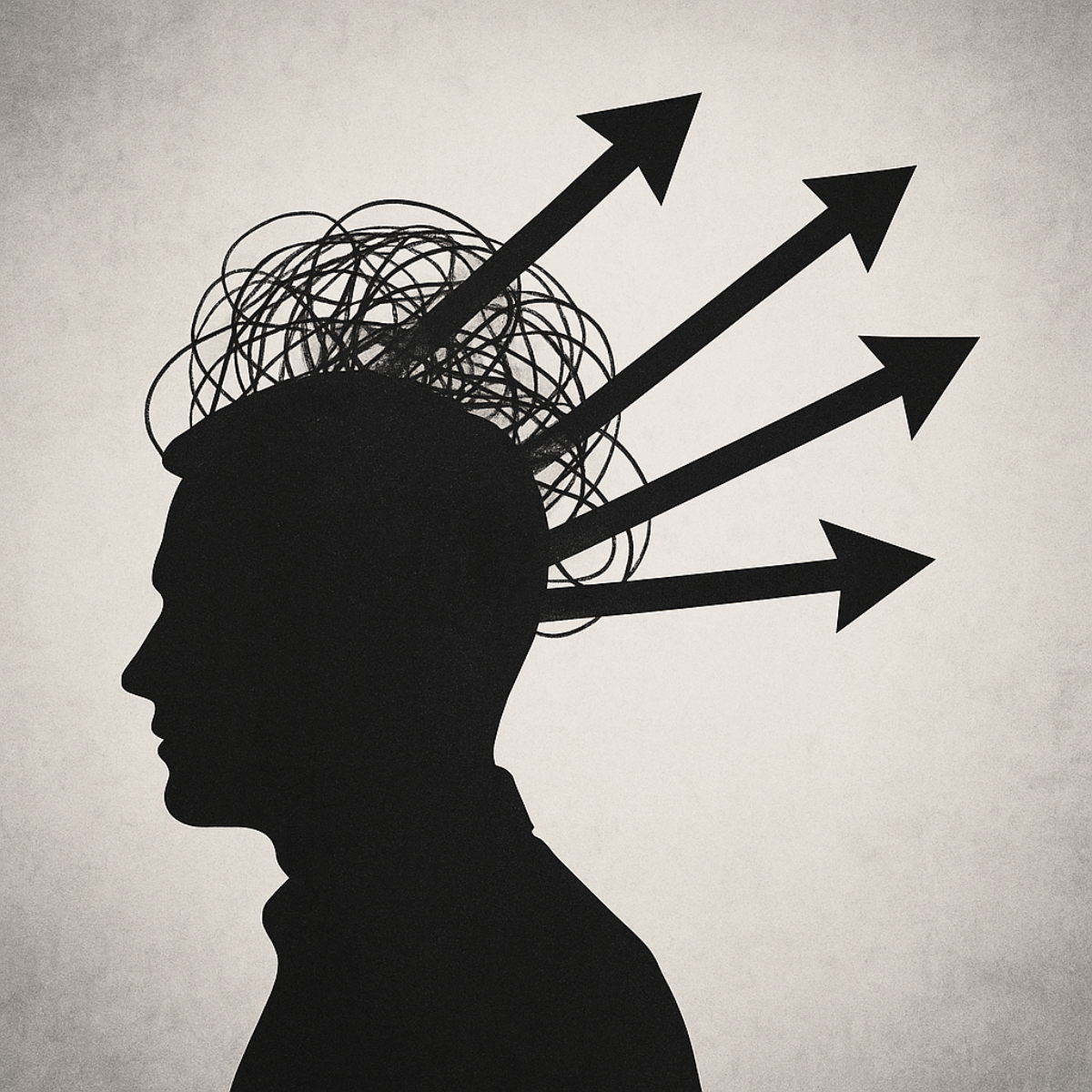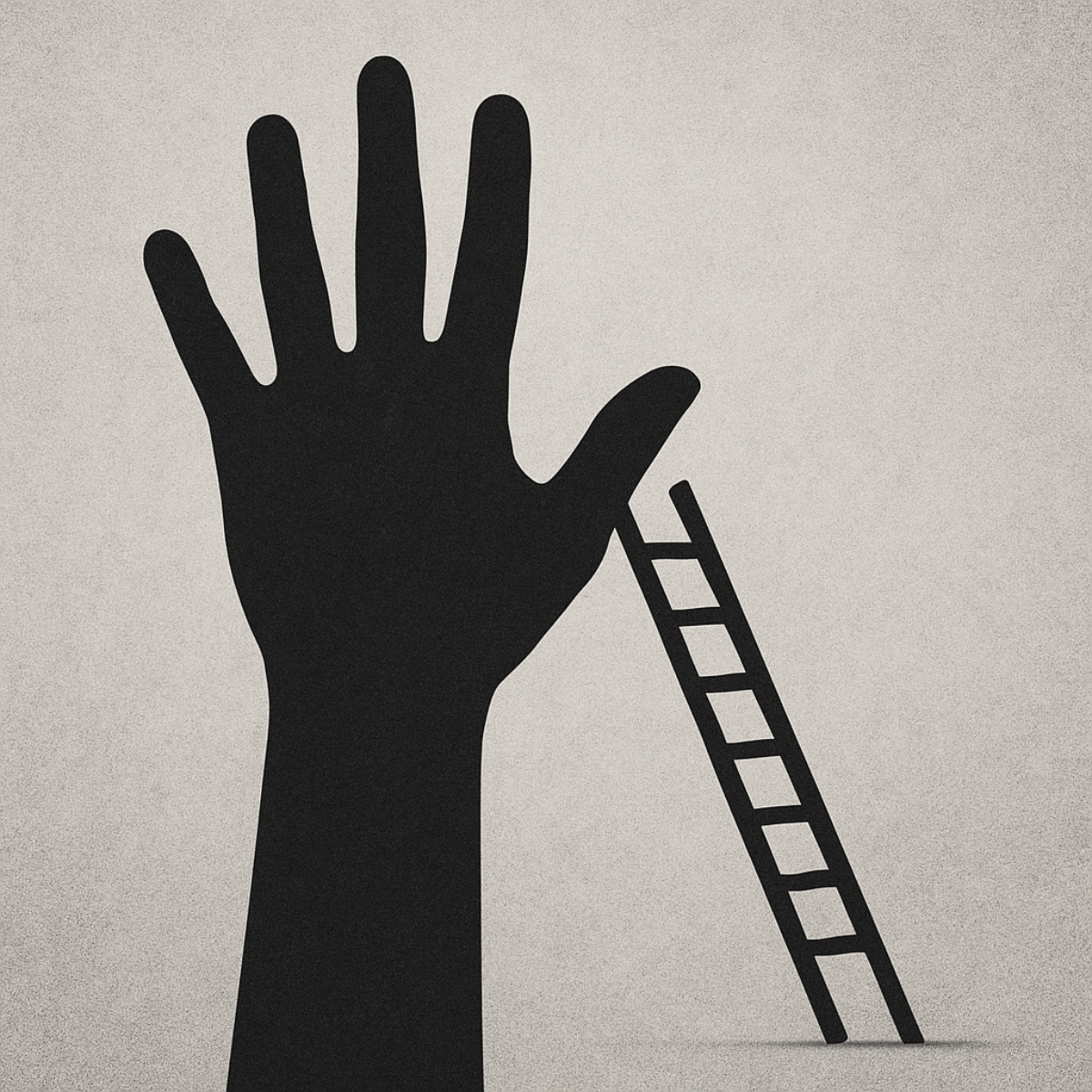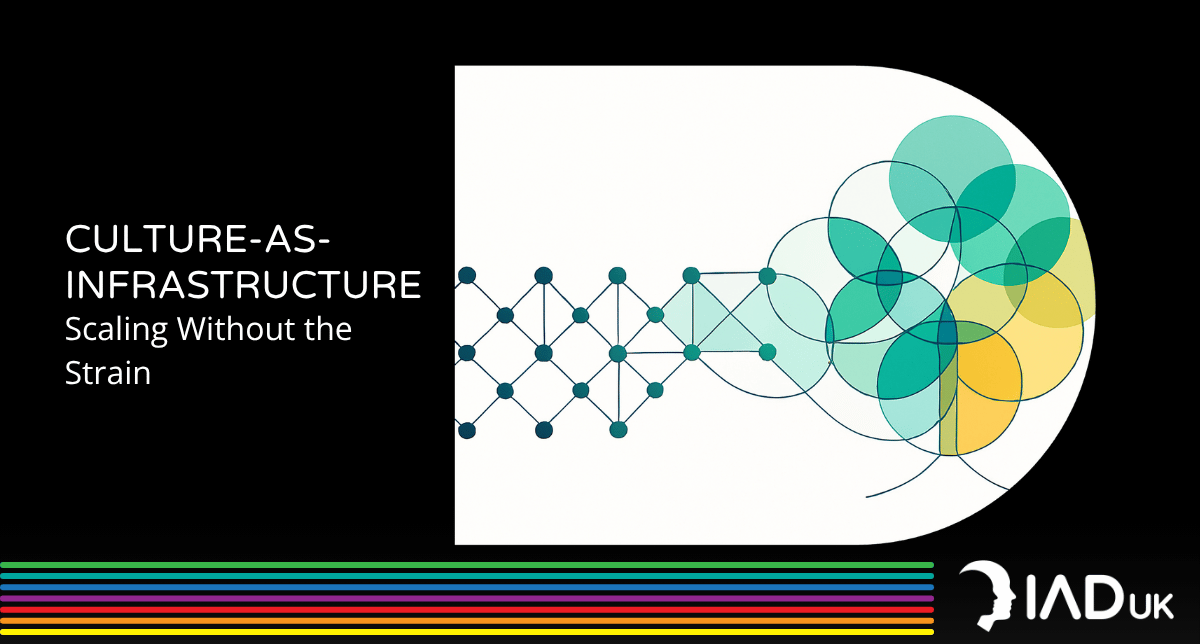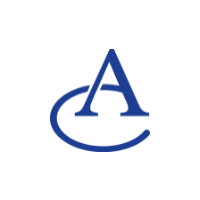Vertical or Bust: The 3 Conditions Every Leadership Programme Needs and Most Miss

Leadership development is under pressure. In organisations navigating volatility, ambiguity, and relentless complexity, the gap between the expectations placed on leaders and the actual capacity they possess to meet those expectations is widening.
The response from many OD and transformation functions? More programmes. More competencies. More models. And yet, many of these interventions remain anchored in horizontal development: adding more knowledge, polishing more behaviours, refining more skills. Important, yes. Transformative? Rarely.
The real issue is not capability in the conventional sense. It is capacity: the ability to think in more complex, adaptive, and integrative ways. This is the essence of vertical development. And without it, even high-performing leaders find themselves stuck: frustrated, reactive, and unable to match the complexity of the challenges they’re facing.
OD and transformation leaders know this intuitively. They see smart, motivated leaders plateauing. They see leadership programmes that tick all the right boxes, but fail to shift mindset. They see stakeholders asking for “transformation” while resourcing “training.”
This is the unspoken crisis in leadership development: a system optimising for the wrong kind of growth.
Vertical development isn’t optional these days, it’s foundational. And unless leadership programmes are designed to enable it, the return on investment, both human and organisational, will remain disappointingly low.

The Vertical Imperative: Rethinking Leadership for a FRAME World
Complexity is no longer something leaders react to, it is something they must consciously construct meaning within. At IAD UK, we frame today’s leadership environment through the lens of FRAME: Fluid, Responsive, Ambiguous, Multi-perspectival, and Emergent.
This is not just a new vocabulary. It signals a fundamental shift in what development must do. In a FRAME context:
- Stability is temporary. Leaders must flow with change, not freeze against it.
- Outcomes are not pre-defined. They emerge from the interaction between cognition and context.
- There are no simple truths. Leadership means holding multiple, conflicting perspectives, without defaulting to resolution.
The traditional learning response (adding knowledge, refining behaviours) is no longer sufficient. Horizontal development increases skill within an existing mindset. But in a FRAME environment, it is the mindset itself that must evolve.
That is the work of
vertical development. And it requires more than stretch assignments or coaching conversations. It requires a
developmental architecture purpose-built to reconfigure how leaders think.

Through the Dynamic Intelligence Development System (DIDS), IAD UK creates the precise conditions needed to enable this shift. These conditions are not abstract, they are engineered:
- Cognitive Stretching: Leaders engage in live micro-experiments that disrupt their habitual thinking and expose the limits of their Cognitive Intentions.
- Perspective Friction: Leaders are challenged by a More Complex Other and peer perspectives that bring developmental contrast and depth.
- Meta-Cognitive Activation: Leaders build real-time awareness of how they are constructing meaning, and learn to shift that construction with intention.
This is what makes vertical development measurable, repeatable, and strategic.
The question for OD and transformation leaders is no longer “Are we developing our leaders?” It is: “Are we evolving the way our leaders think?”
Because in a FRAME world, mindset is not just a leadership trait. It is a leadership system.
Why Most Leadership Programmes Miss the Mark
Despite years of investment and innovation, most leadership development still fails to deliver the depth of transformation today’s complexity demands.
The core issue is not content. It is cognitive architecture.
Traditional programmes remain anchored in horizontal development. They teach new skills, introduce fresh models, and encourage more effective behaviours. Yet they rarely challenge the deeper assumptions and preferences that shape how leaders think. The result is surface growth: leaders who may be more confident or better informed, but who remain bound to the same interpretive habits.
The developmental mechanisms that drive vertical growth (stretch, friction, metacognition) are often missing, or artificially simulated:
- Stretch is managed to avoid discomfort.
- Perspective-taking is framed as consensus-building, rather than contrast.
- Reflection is time-boxed and disconnected from real-time decision-making.
Worse, many organisations equate coaching with development. While coaching can support growth, when used without a developmental architecture it tends to reinforce current frames rather than evolve them. Leaders become better at navigating what they already understand, without learning to construct meaning in fundamentally new ways.
The result is a kind of high-functioning stasis: leaders doing more, faster, but thinking the same.
At IAD UK, we see this as a structural failure. Leadership programmes built without a vertical foundation inevitably reach a ceiling. They improve what already exists, but cannot evolve it.
If the organisation is growing in complexity and the leaders are not, then the system is compounding risk.
To meet the demands of a FRAME world, development must go beyond behaviour. It must work directly with the structures of thought.

Engineering the Conditions for Vertical Development
Most leadership programmes aim to inform. The Dynamic Intelligence Development System (DIDS) exists to transform.
Developed by IAD UK and grounded in Constructed Development Theory (CDT), DIDS is a developmental architecture that enables leaders to grow vertically by shifting the structure of their thinking in real time.
Rather than layering new knowledge on top of existing assumptions, DIDS restructures the way leaders construct meaning. It embeds the three developmental mechanisms required for vertical movement directly into live leadership practice:

1. Cognitive Stretching
Leaders engage in structured micro-experiments drawn from their real-world context.
These are designed to:
- Surface habitual Cognitive Intentions
- Invite alternative patterns of attention and interpretation
- Create productive discomfort that exposes developmental limits
These experiments are not simulations or reflective exercises. They are real interventions into how leaders lead, in real time.
2. Perspective Friction
DIDS pairs leaders with a More Complex Other (a coach who operates at a higher level of cognitive complexity) and integrates diverse peer challenges. This creates developmental contrast:
- Leaders encounter viewpoints they cannot easily assimilate
- They are invited to hold tension, not resolve it
- Over time, they build the range to integrate multiple, even opposing, perspectives
This is not a conversation. It is developmental confrontation with difference.
3. Meta-Cognitive Activation
DIDS equips leaders with tools to develop Dynamic Intelligence: the ability to observe, shift, and select Cognitive Intentions consciously.
These include:
- Cognitive Intention Profiling to reveal default thinking patterns
- The Awareness Quotient (AQ) to track metacognitive capacity
- Reflection cycles that reinforce intentional reconstruction of meaning
This is where transformation becomes sustainable: not just a flash of insight, but a repeatable habit of reframing.
Together, these mechanisms create a system, not a workshop, not a course, for constructing leaders who are not just more capable, but more cognitively adaptive.
For OD and transformation leaders, this marks a strategic shift: from developing performance to evolving perception. From teaching better ways to lead, to constructing better ways to think.
This is not about making things harder. Paradoxically, raising cognitive complexity often reduces overwhelm, because leaders begin to see clearer patterns in the chaos.
Before long, what once felt like firefighting becomes navigable terrain.
Roadmap
How to shift from firefighting engagement issues to designing for complexity-fit leadership
1. Re-frame what success looks like
Move beyond engagement as the primary signal. Start trackingcomplexity alignment, the match between what roles demand and how leaders think. Treat it as a lead indicator for both cultural health and strategic performance.
2. Audit critical roles for cognitive fit
Choose two roles where poor decisions, slow execution, or churn have carried hidden costs. Use a Complexity Gap Diagnostic to surface where mismatches lie between the role's requisite complexity and the individual’s current cognitive profile.
3. Target interventions where business risk is highest
Don’t roll out another blanket training initiative. Focus resources where complexity gaps intersect with business-critical priorities: transformation, sales leadership, cross-functional orchestration. These are where marginal gains create exponential impact.
4. Normalise development in the flow of work
Make vertical development a lived part of the culture, not an offsite activity. Use the principles of aConsciously Constructing Culture™ to embed reflection, feedback, and deliberate disequilibrium into the way teams operate every day.
Julie's story
From Overwhelm to Influence: One Complexity Gap Revealed. And Closed
Julie had every reason to be successful. As Head of Sales at FloweMedia, she was responsible for driving revenue, converting leads, and translating the agency’s strategic value into commercial wins. On paper, she was effective. Clients liked her. Proposals landed. But something wasn’t scaling.
Despite solid KPIs, her performance was stalling. Delivery strained under client demands she hadn’t challenged. Internally, Julie was exhausted, struggling to assert her ideas, stretching herself thin to meet everyone's expectations, and doubting whether she was really “senior leadership material.”
A Complexity Gap Diagnostic revealed the real issue. The role required AQ7: self-aware, adaptive, and strategic. Julie was operating from a low AQ5: highly responsive, but externally referenced, and caught in patterns of people-pleasing and perfectionism. She wasn’t underperforming. She was overthinking in the wrong direction.
Instead of tackling “confidence” or “sales technique,” the intervention focused on her construction of self: how she made sense of power, boundaries, and value. Through a series of developmental conversations, coaching with a More Complex Other, and targeted disequilibrium around her Cognitive Intentions, Julie began to see herself, and her role. differently.
Six months later, the difference was measurable and felt across the business:
- She was closing larger deals with clearer boundaries.
- Strategic conversations became a source of energy, not anxiety.
- Her AQ score had shifted toward AQ6+, with upward momentum.
Crucially, she hadn’t just become “better at sales.” She had becomea more complex thinker, one capable of holding ambiguity, asserting influence, and making intentional choices in high-stakes situations.
And that shift, unseen in surveys, but unmistakable in outcomes, unlocked the next level of performance for both Julie and FloweMedia.
Is Your Programme Vertically Capable?
Not all development is developmental.
Many leadership programmes are well-designed, well-received, and professionally delivered, but they still fail to create leaders who can thrive in a FRAME world. Why? Because they optimise for confidence and competence within existing mindsets, rather than engineering the shift to more complex ways of thinking.
This checklist helps OD and transformation leaders assess whether their leadership offer is vertically generative, or merely horizontally efficient.
Most programmes can answer “yes” to questions about content quality, participant satisfaction, or behavioural change.
But the real test is this:
Does your leadership development programme change how leaders think: under pressure, in the moment, and over time?
If not, it is preparing them for a past that no longer exists.

| Vertical Development Mechanism | Key Question | What DIDS Delivers |
|---|---|---|
| Cognitive Stretching | Are leaders pushed beyond their habitual patterns of thought in real time? | Live micro-experiments that surface and challenge default Cognitive Intentions |
| Perspective Friction | Are leaders exposed to differences that provoke genuine re-evaluation, not just discussion? | Structured contrast with a More Complex Other and diverse peers to expand interpretive range |
| Meta-Cognitive Activation | Are leaders equipped to observe and shift how they construct meaning, in the moment? | Tools like the Awareness Quotient (AQ) and Cognitive Intention Profiling to build real-time Dynamic Intelligence |
Vertical or Bust
The demand for leadership has changed. The context has changed. The consequences have changed.
But in many organisations, the developmental architecture has not.
Leadership development continues to polish capability, refine communication, and build confidence. But these gains sit within the same cognitive structures, the same assumptions, biases, and meaning-making patterns that were formed under simpler conditions.
In a FRAME world, this is no longer safe.
- When change is fluid, strategy becomes improvisation.
- When perspectives multiply, clarity becomes construction.
- When ambiguity deepens, meaning becomes the leader’s work.
If leaders cannot adapt at the level of thinking, they become liabilities in systems that demand structural responsiveness.
The provocation is simple:
If your leadership programme does not explicitly evolve how leaders think, it is no longer fit for purpose.
This is not a question of design quality or delivery excellence. It is a question of
developmental intent.

If your programme cannot demonstrably:
- Stretch the leader’s cognitive defaults
- Challenge their interpretive limits
- Equip them to reframe in the moment
…then it may be reinforcing the very constraints it claims to remove.
OD and transformation leaders have a choice:
Keep improving the surface.
Or start reconstructing the core.
Because the future does not need more trained leaders.
It needs leaders who are
capable of transformation because they are constructed to transform.
If your leadership development strategy still assumes that more content leads to more capacity, it’s time to upgrade the frame.
The most forward-thinking organisations are no longer treating vertical development as a nice-to-have. They are recognising it as a strategic necessity: the only reliable way to build leaders who can thrive in a world that is Fluid, Responsive, Ambiguous, Multi-perspectival, and Emergent.
At IAD UK, we specialise in creating the developmental conditions that make this possible. Through the Dynamic Intelligence Development System (DIDS), we work with OD and transformation leaders to shift leadership development from knowledge transmission to cognitive construction.
If you're ready to build a vertically capable leadership culture, we invite you to:
- Explore how DIDS works in practice at adultdevelopment.uk/dids-for-leaders
- Download the whitepaper Unlocking Vertical Leadership to understand the full developmental framework
- Book a conversation to explore how your current leadership offer could evolve through a vertical lens
The question isn’t whether your leaders are developing.
The question is:
Are they developing fast and deeply enough to match the reality they are leading in?
If not: vertical, or bust.
Schedule a call to explore how we can help your organisation
go vertical
Alternatively, why not download your complementary copy of our new book:
An Introduction to the Dynamic Intelligence Development System™




